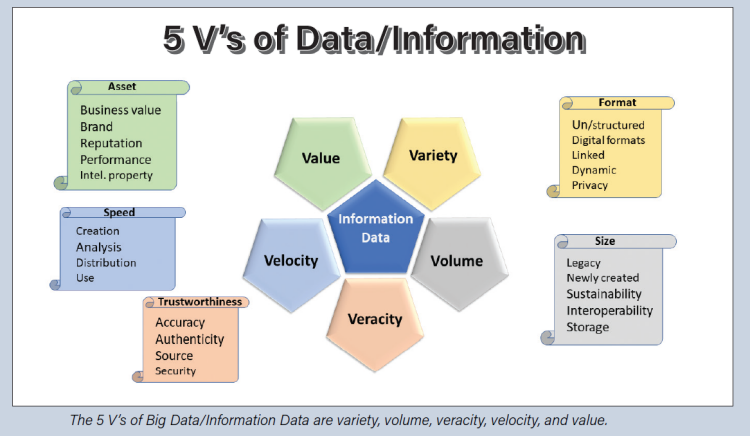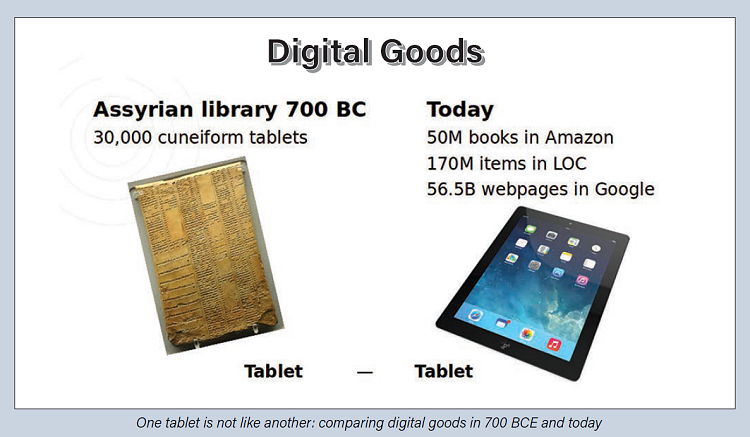Libraries have long been interested in digital transformation. In my January/February 2019 article (“From Digitization, Through Digitalization, to Digital Transformation,” Online Searcher, v. 43, n. 1: pp. 36–39; infotoday.com/OnlineSearcher/Articles/Features/From-Digitization-Through-Digitalization-to-Digital-Transformation-129664.shtml), I elucidate why scanning and automation don’t qualify as digital transformation and detail the differences between digitization, digitalization, and digital transformation. Since that time, it’s become apparent that we librarians are already deeply involved with the omnipresent digital transformation of our work environments.
It’s not just libraries. Digital transformation has been a hot topic in the business world for several years. Yet until the pandemic brought urgency to the adoption process, many organizations—businesses and libraries alike—had been slow to embrace digital transformation, fearing it would cause too much disruption to the status quo. Smaller projects and minor changes did occur, but only the sudden shift to remote working forced the acceptance of pervasive digital transformation in the form of videoconferencing, elearning, streaming services, long-distance collaboration, telemedicine, and a host of other electronic/digital products and services.
This article considers the impact of digital transformation on the future of library work. First, I identify the enablers and drivers of digital transformation. I then describe four possible impacts digital transformation could have on libraries. The first impact is on the future of library products and services. In other words, the creation of digital goods. The second is the impact on library processes and the need for operational agility. The third impact is on customer centricity, and the fourth is on the new demands placed on the library workforce.
We are all aware that the change from an analog to a digital world is upon us. The economy and society, science and education, culture and politics, and our private and business lives are all undergoing digital transformations. Digital transformation is no longer just an experiment. It is already being fully implemented using AI, machine learning, automation, Big Data, and other information technologies. It’s also notable that digital transformation is not an IT project in and of itself. It’s no longer true that only IT can run things.
Definitions of digital transformation vary according to their purpose and the definer’s background. We can assume that digital transformation is about doing things differently—creating a completely new business model by using modern information and computer technologies. It leverages existing knowledge to change the essence of the organization—its culture, management strategy, technological mix, and operational setup. It also places the customer at the center of all decisions and actions.
Digital transformation enablers
Digital transformation has been in process for a long time. There were several developments that enabled its appearance:
- Dramatic increase of IT processing power
- Speed of communication
- Introduction of automation and robotics
- Appearance of augmented, virtual, and mixed reality
- AI and machine learning
- Big Data
- Strong analytics
- Powerful visualizations
Digital transformation drivers
Most human progress is at first met with resistance. However, the driving force to move toward and use digital transformation has been very strong and has included these facets:
- Increased competition
- Financial pressure
- User expectations
- A “new normal” (a product of the COVID-19 pandemic)
We should not forget that the existence and use of sophisticated and powerful IT tools are not enough to trigger massive change. Organizations need determined management, clear vision, and forward-thinking leadership. Updated business models also need to be created that use new IT solutions, leverage existing knowledge, and profoundly change the essence of organizations—their culture, management strategies, technological mixes, and operational setups. All this is geared toward pursuing new revenue opportunity streams, creating new products, and inventing new services.
The future of libraries
Identifying the drivers and enablers of digital transformation as it affects businesses leads to two central questions: Does digital transformation impact the future of libraries? If so, then how?
For many centuries, libraries stayed relatively unchanged, characterized by their physical location, collections of books and documents, certain types of catalogs, and library professionals helping visitors find information and knowledge. The introduction of computers has challenged almost every aspect of the classic library concept. Online libraries replacing physical locations, millions of electronic files being accessible, new retrieval tools being developed, and the physical absence of library professionals assisting patrons are just some of the most recent changes.
A review of future library scenarios indicates that there are differing views and predictions of what this might look like.
Minimalists: They believe that libraries are already well-developed and automated, so even with small changes, libraries will meet the future. In other words, libraries will stay as they are today.
Moderates: They advocate for large change through iterative, gradual augmentation, but libraries would remain recognizable to what is today considered a contemporary library.
Radicals: They foresee major change with substantial transformation. Libraries will barely be recognizable but will still be regarded as libraries. In other words, they will be highly auto mated collections of electronic texts manipulated by sophisticated, AI-based applications offering text understanding and interpretation, aggregation of ideas, intelligent argumentation, and complex presentation of existing concepts.
Extremists: This smaller group believes that there will be no libraries in the future, or at least not libraries as we know them today. Instead, there will be intelligent machines of extreme quantum computing power containing all the knowledge ever recorded, dealing with knowledge qubits, and being capable of coming up with new ideas that offer creative solutions. It does sound like science fiction, but some aspects of this future system already exist or are being developed.
Digital goods
There are 5 V’s that represent the essentials of Big Data and Information Data: variety, volume, veracity, velocity, and value. Libraries have definitely moved from physical book collections to a variety of formats, many of them digital. The volume of in formation available through libraries has likewise increased, raising questions about sustainability and storage. A basic tenet of librarianship is veracity of information. We care deeply about information that is trustworthy, accurate, and authentic. Libraries are called upon to operate at internet speed, as users come to expect quicker service. Reimagining the value of libraries could be seen as part of digital transformation.
To put the 5 V’s in perspective: The first Assyrian library in the 7th century BCE, located in Nineveh in modern-day Iraq, included some 30,000 cuneiform tablets that were organized according to subject. Today, worldwide, 2.2 million books are published annually. The Library of Congress hosts 170 million items. Amazon, a newly created holding and selling platform, holds 50 million books. Google has a gigantic collection of 56.5 billion webpages.


We can only wonder what tomorrow’s versions of AI-powered virtual assistants will bring. How will future versions of Amazon Alexa, Apple Siri, Google Assistant, and Baidu DuerOS change our world?